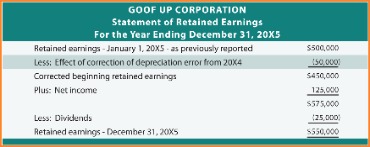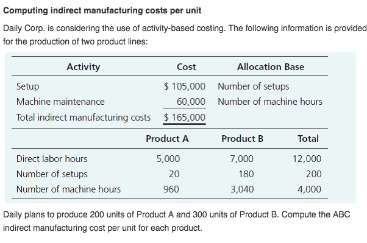Content

A check is placed under the total of this column as this total is net posted. This ensures that the individual customers’ accounts are up to date and accurately reflect the balance owed at that date. The Balance uses only high-quality sources, including peer-reviewed studies, to support the facts within our articles. Read our editorial process to learn more about how we fact-check and keep our content accurate, reliable, and trustworthy.

Or you might have simply added incorrectly when computing the totals. It is usually easy to pinpoint the error because the debits should equal the credits for each transaction. With the cash receipts journal, you will post in two stages, which is like the procedure for many other journals. Because it is clear that this is a cash sale from other columns, there is no need to make a separate entry into the accounts credited column.
What if I Haven’t Been Paid Yet?
Cash receipts journals also serve as a mechanism for internal control that, when correctly implemented, mitigates the risk of fraud, theft, and misuse of funds. At the end of June, the business totals each column to update its general ledger accounts. The cash receipts journal helps the business track its cash inflows, identify the sources of cash, and maintain accurate financial records. A cash receipts journal records all transactions that increase cash for a firm.
All of the amounts owed to the company in the accounts receivable subsidiary ledger must equal the amounts in the accounts receivable general ledger account. Do not record the sales tax you collected in the cash receipts journal. Your cash receipts journal should have a chronological record of your cash transactions. Using your example of cash receipts journal sales receipts, record each cash transaction in your cash receipts journal. You record cash receipts when your business receives cash from an external source, such as a customer, investor, or bank. And when you collect money from a customer, you need to record the transaction and reflect the sale on your balance sheet.
Method of Recording cash Transaction in cash Journal:
July 5 Sold $5,000 of merchandise inventory, terms 1/15, n 30, FOB Destination with a cost of goods sold of $3,000 to Robby Red. One change that may improve the other accounts column for businesses with a number of accounts would be to switch out the account names sub-column with an account number column. Post the number of the general ledger account as a cross-reference. It keeps track of the trade receivable ledger and past-due accounts. It keeps track of all the money received within the time period. To lower the risk of fraud, theft, and the misuse of cash by acting as an internal control for cash received.
- The total adjustment amount in the local currency for the cash batch, bank, and date.
- Any transaction through the accounts recievable should also be listed to the accounts recievable ledger as well.
- In our example, the only other credit column featured in the cash receipts journal is for all other accounts.
- Then, you will post these totals to the correct accounts in the general ledger.
- The credit columns in a cash receipts journal will most often include both accounts receivable and sales.
Based in St. Petersburg, Fla., Karen Rogers covers the financial markets for several online publications. She received a bachelor’s degree in business administration from the University of South Florida. Hearst Newspapers participates in various affiliate marketing programs, which means we may get paid commissions on editorially chosen products purchased through our links to retailer sites. Field for the alternate currency is unselected, the alternate currency amount is 57.00.
FAQs on Cash Receipts Journal
These payments are also recorded in the subsidiary ledger for accounts receivable in the individual customer’s account. The cash receipts journal is a specialized accounting journal and is an important part of the general journal. When a company receives a loan from a bank, a transaction is performed in the cash sales collections journal to record the loan. There is only one real disadvantage of using the cash receipts journal. And that is that it only takes into consideration the cash basis of accounting. The cash receipts diary also contains information on any additional loans that a person has taken out from banks or other financial institutions.
Deciding which one to use to enter customer payments can be hard. I’m going to experiment with both to show you why either one can be used. The total sundry amount in the local currency for the cash batch, bank, and date. The total deferred liability amount in the local currency for the cash batch, bank, and date. The total A/R amount in the local currency for the cash batch, bank, and date. The total adjustment amount in the local currency for the cash batch, bank, and date.
Even though I have two checks they will hit the bank as one amount based on how I deposit them with the bank. Different types of receipts are generated from cash sales, debit or credit card payments, payments via check or bank transfer, or store credit. Receipts should also be generated for funds received via lenders or investors. Your sales and cash receipts journal will probably have more columns than our sample. For example, you could have more than one column for “Sales” by splitting your sales into categories. You might have one column labeled “Parts and Supplies Sales” and another labeled “Service and Repair Revenue.” This could provide you with more meaningful information.

Similarly, many registers and POS systems automatically generate relevant journal entries—so, chances are, you won’t need to manage this manually. Here’s an example of a cash receipt you can customize for your business. July 10 Sold $1,500 of merchandise inventory for cash, FOB Shipping Point, with a cost of goods sold of $1,000. The information featured in this article is based on our best estimates of pricing, package details, contract stipulations, and service available at the time of writing. Pricing will vary based on various factors, including, but not limited to, the customer’s location, package chosen, added features and equipment, the purchaser’s credit score, etc. For the most accurate information, please ask your customer service representative.
Subsidiary Ledgers
Thus, the proper design, implementation, and maintenance of the accounting information system are vital to a company’s sustainability. Because you have already received the cash at the point of sale, you can record it in your books. Again, you must record a debit in your cash receipts journal and a credit in your sales journal. Since no cash is received from credit sales transactions, they are not recorded in an accounting journal.
- A business concern may use any of the following methods for the recording of cash transaction Keeping in view its needs and requirements.
- These amounts are posted to the individual customer’s accounts in the accounts receivable subsidiary ledger.
- It should be kept for income tax reporting purposes and to support your financial statements.
- Cash, checks, debit cards, credit cards and wire transfers are treated as cash sales.
As they are posted, the account numbers are placed in the post reference column. An invoice is a request for payment after goods or services have been exchanged. A cash receipt, on the other hand, is the record that says payment has been received for goods or services and the receipt is the proof of purchase for the buyer. I previously blogged on how to create a bank deposit and today I’d like to compare the cash receipt journal with the bank deposit process. Sales Journal.The sales journal is the income counterpart to the purchase journal.
How do you write a cash receipt journal?
- The transaction date.
- Notes about the transaction.
- Check number (if applicable)
- Amount.
- Cash receipt account types (e.g., accounts receivable)
- Any sales discounts.


